Recent Articles
Popular Makes
Body Types
2015 GMC Terrain Denali Review and Quick Spin
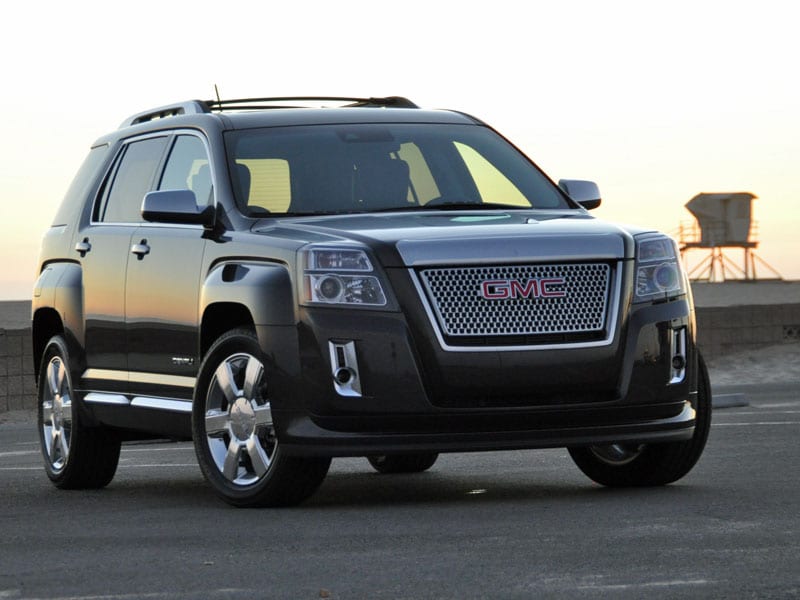
2015 GMC Terrain Denali V6 AWD Iridium Metallic Front Quarter Right ・ Photo by Christian Wardlaw
Unquestionably, the GMC Terrain has proven itself a hit with crossover SUV buyers. Straddling the line between what constitutes a compact and a midsize crossover, the 2015 Terrain supplies plenty of room for five people wrapped in a rugged-looking package. Plus, in Terrain Denali trim, it offers a long list of upscale upgrades at a comparatively low price compared to similarly sized models from luxury marques.
Last year, I reviewed the popular Terrain SLT. This year, I wanted to see if the Terrain Denali offered greater substance than the vehicle upon which it is based, or if this version amounted to no more than mere window dressing. The answer, as it turns out, is that the Denali model is a little of both.
About Our Test Car
You can get a 2015 GMC Terrain for as little as $27,485, including the $925 destination charge. I examined the luxury-oriented Denali model, painted an unusual color called Iridium Metallic. The starting price is more than $38,000, and my loaded example, equipped with a V-6 engine, all-wheel drive, a navigation system, a rear-seat entertainment system, trailering equipment, and a cargo package, came to $42,430.
Gulp. That’s not cheap. For comparison, a loaded Ford Edge or Nissan Murano costs more, but a Hyundai Santa Fe, Jeep Cherokee, Subaru Outback, or Volkswagen Tiguan with all the extras isn’t nearly this pricey. Does that mean the Terrain Denali is priced right? That’s up to you to decide.
Regardless of how you judge pricing, GMC makes sure the Denali model stands apart from other versions of the Terrain. Remember when bling was a thing, and the more of it you had, the fancier you felt? Well, there’s no shortage of bling on a Terrain Denali. The good news is that the shiny bits are designed to look more like polished aluminum than chrome.
I’ve never been a fan of the Terrain’s styling-by-T-square, Lego-style design, especially the huge squared-off fenders and giant, oversized lighting elements. The Denali’s big 19-inch wheels sure go a long way toward improving the proportions in the Terrain’s bold details, though.
There’s no question that the Denali’s interior is much nicer than a Terrain SLE or SLT, equipped with higher quality leather, soft dashboard material with GMC-red exposed stitching, and a generous load of standard equipment. Build and component quality sure could use some extra attention to detail, though.
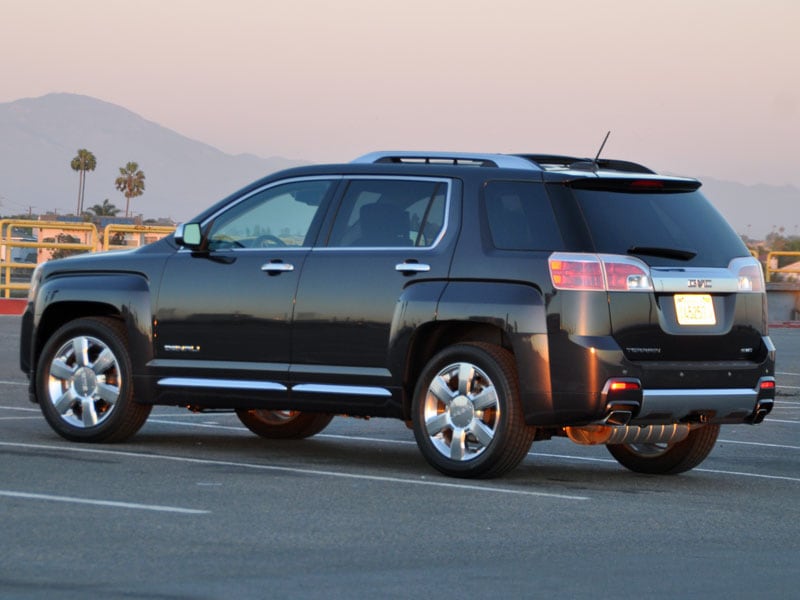
Photo by Christian Wardlaw
Comfort and Cargo
When it comes to front seat comfort, I’m a fan of the Terrain Denali. This crossover SUV’s 8-way power driver’s seat is really comfortable for hours behind the wheel, and the front passenger gets a matching range of adjustment. The thick-rimmed, wood-and-leather steering wheel is also pleasing to grip for longer trips.
However, GMC really should have added soft-touch padded material to the Denali’s upper door panels in addition to the dashboard. I never touch the dash, but I often crook an elbow against the door panel. In the Denali, the hard plastic in this location makes that an uncomfortable proposition.
If you’re planning to carry passengers on a regular basis, the Terrain’s back seat is really big. The seat slides, allowing owners to mix and match space for people and stuff, a thoughtful solution to an occasional problem. The seat itself is comfortable, and provides lots of rear seat legroom when moved all the way back. Weirdly soft outer cushion padding feels strange, but definitely helps passengers to get into and out of a Terrain.
My test vehicle had the Terrain Denali’s optional dual-screen rear-seat entertainment system, which adds nearly $1,300 to the sticker price. The upgrade includes input jacks for attaching a gaming system, but there’s no 3-prong power outlet. My own kids weren’t interested in this, preferring to use smartphones for their on-road entertainment.
While the Terrain’s rear seat is nice and roomy, you might be disappointed in the amount of cargo room waiting behind the power rear liftgate. GMC says the space measures 31.6 cubic-feet of room behind the rear seat, but enormous side panels really chew into usable volume below the windows, making it hard to even load a compact folding stroller into this SUV. It shouldn’t be hard to fit a stroller into a crossover.
Fold the rear seats down, and the Terrain carries as much as 63.9 cu.-ft. of cargo. Now, before you get all giddy about that number, keep in mind that a Subaru Forester beats this GMC by an entire Cadillac ATS Coupe trunk’s worth.
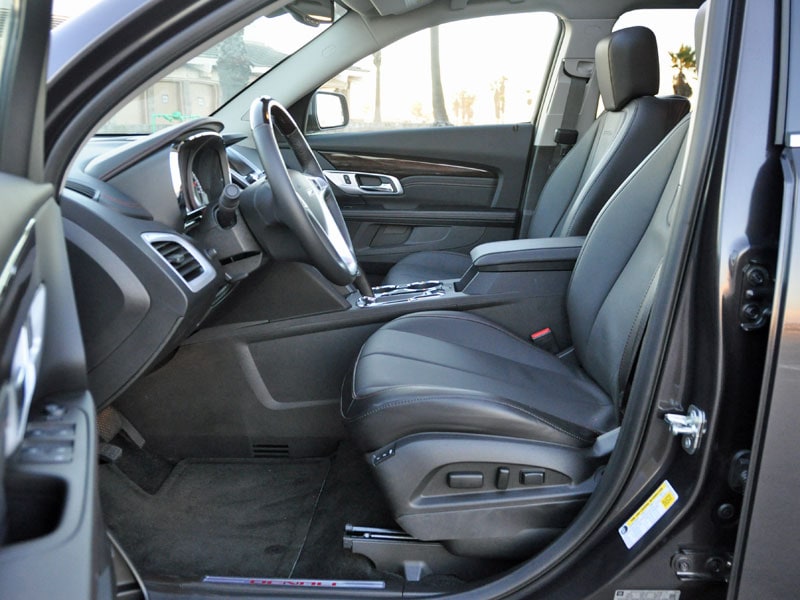
Photo by Christian Wardlaw
Features and Controls
When it comes to the Terrain Denali’s features and controls, I’m not a fan. Many of them feel far too flimsy given this SUV’s window sticker; the first time I adjusted the rearview mirror and used the IntelliLink infotainment system’s tuning knob, I thought they were going to divorce themselves from the vehicle. Plus, the power windows don’t offer one-touch operation when the driver raises them, which strikes me as slightly ludicrous given the Denali’s price tag.
I also find the center control panel confusing and, as a result, distracting, even after hundreds of miles in the driver’s seat. Everything is jumbled together rather than separated into distinct zones related to specific overall functions, and the knobs and buttons are arrayed on a panel that angles up and away from the driver. As a result, it is a real stretch to reach infotainment functions, and it doesn’t help that the IntelliLink touchscreen is deeply inset into the dashboard. Plus, black lettering on silver buttons offers poor contrast in bright sunlight and at dusk, making it hard to find what you’re looking for. Dim red backlighting at night doesn’t help much, either.
Here’s another thing about the Denali that luxury SUV buyers might not like. There’s no passive entry with push-button ignition system. Personally, that doesn’t bother me. I actually prefer using a key to start a vehicle, as I find that I’m less likely to lose track of it. But I’m sure lots of potential buyers will associate the Terrain Denali’s lack of that feature with a lack of modern sophistication. Without this feature, GMC is almost certainly losing potential sales.
Maybe the new 4G LTE Wi-Fi connection, added to most 2015 model year vehicles from General Motors, will help make up for that omission.
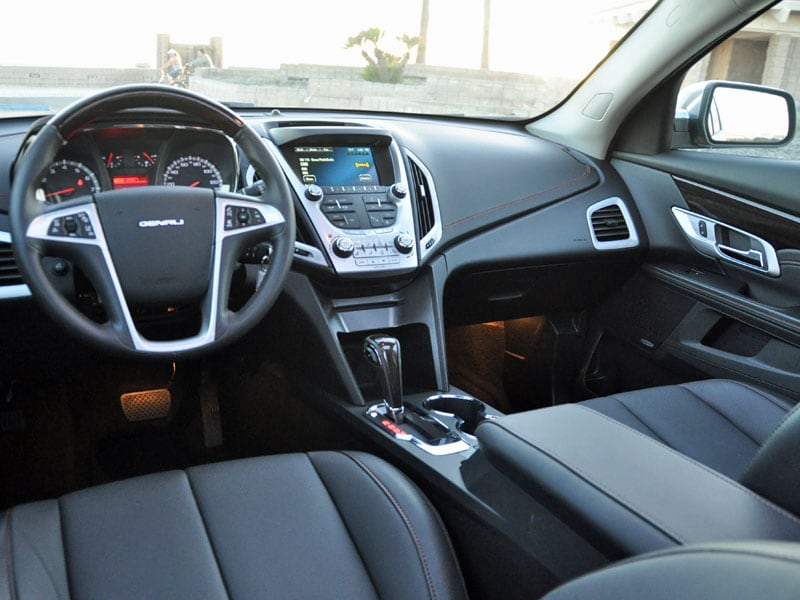
Photo by Christian Wardlaw
Safety Matters
As a fully loaded version of the Terrain, my Denali test vehicle included more than just the basics in terms of safety equipment. The standard OnStar connection includes Automatic Crash Response, which activates if the airbags deploy in order to speed rescuers to the scene of the accident, and every Terrain is equipped with a reversing camera. GMC even makes lane departure warning and forward collision warning systems available on all versions of the Terrain except for the base model.
That sounds great, but here’s the problem. Two of the most useful safety features – a blind spot monitoring system and a rear cross-traffic detection system – are offered only for the Terrain Denali, on which they come standard. Personally, if buying a Terrain SLE or SLT, I’d much rather have these features than the lane departure warning and forward collision warning systems.
In NHTSA crash tests, the Terrain receives an overall rating of 4 stars, and is called a “Top Safety Pick” by the Insurance Institute for Highway Safety (IIHS).

Photo by Christian Wardlaw
What's Under the Hood
Most GMC Terrains have a remarkably spunky 182-horsepower, 2.4-liter 4-cylinder engine, but my test vehicle includes the optional 3.6-liter V-6 engine. In the Terrain, it generates 301 horsepower, making this V-6 more powerful than the engine that GMC installs in the much bigger Acadia SUV.
As you might expect, then, a Terrain V-6 feels mighty quick when you stomp on the gas. But, it is also thirsty. I averaged 18.8 mpg during a week of driving, just short of the EPA’s combined rating of 19 mpg for this model.
My test Terrain also had a fully automatic all-wheel drive system. Did I use it? I have no idea, because it was dry and sunny during my week behind the wheel, and thanks to just 6.9 inches of ground clearance – barely more than a minivan – I didn’t venture off paved roads with this GMC.
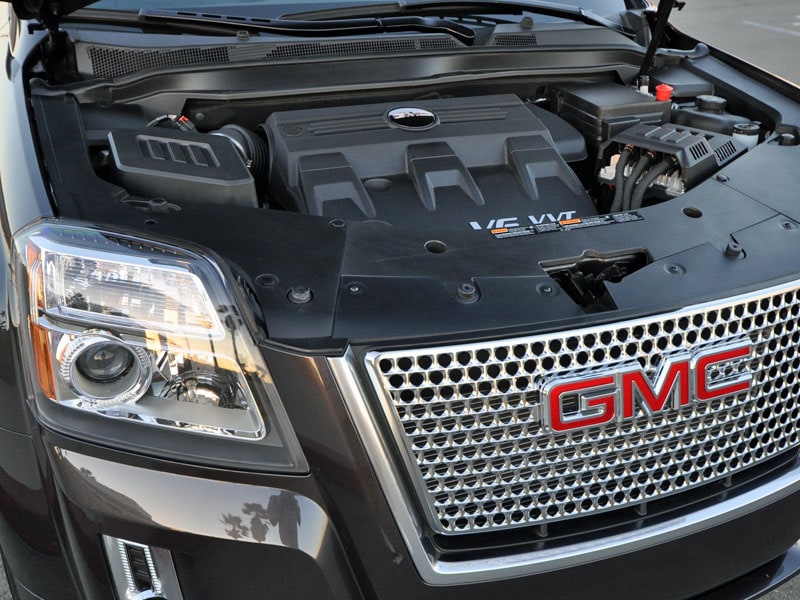
Photo by Christian Wardlaw
Driving Impressions
Once you twist the key and fire up the V-6 engine, it quickly becomes clear that there are two primary reasons to get the Terrain’s more powerful motor. One is for the attractive 19-inch wheels, which are exclusive to this engine. The other is to benefit from truly speedy acceleration.
Of course, the price to be paid for the more powerful V-6 is a bigger fuel bill, on top of the $1,900 premium GMC charges for the engine. Obviously, you’ve really gotta want the extra horsepower and torque to make the required premium worthwhile.
The V-6 engine adds a palpable amount of weight over the Terrain’s front end, but the big 19-inch wheels and P235/55R19 tires, available only with the larger engine, help the Denali to resist understeer and tire scrub when taking corners with enthusiasm. Because of this model’s specific suspension tuning, which does a good job of managing the added weight while at the same time refining how the Terrain drives compared to SLE and SLT models, you might find yourself doing just that more frequently than not.
Steering tuning and brake pedal feel and response also deserve commendation. However, when driving the Terrain Denali on a twisty back road, the steering wavered a bit when taking constant radius corners, almost like it wanted to spin back to center before I was ready.
While the Terrain proved far more athletic than I expected, even fun to drive at times, it is nevertheless best suited to urban, suburban, and highway environments, where it delivers an impressive blend of acceleration, ride, and handling characteristics. The Denali is incredibly quiet inside, too. Aside from faint road rumble and wind noise at higher speeds, the interior is remarkably silent.
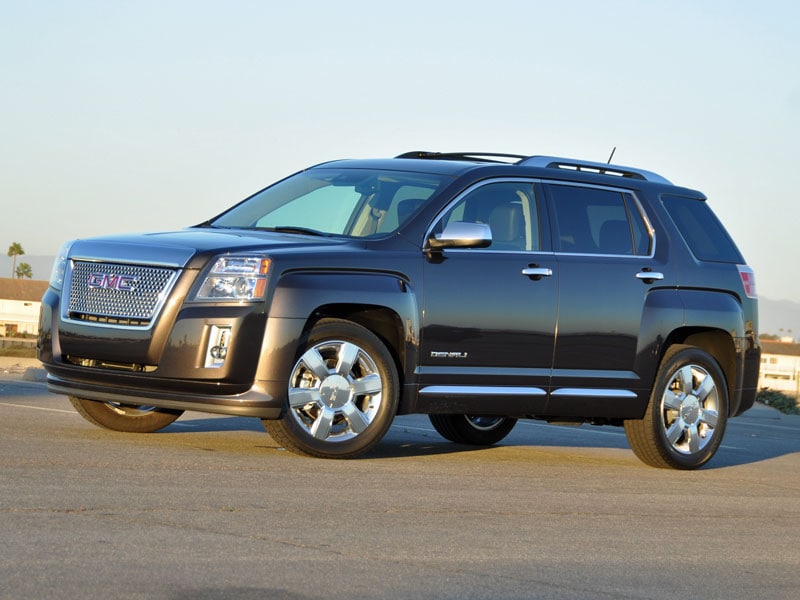
Photo by Christian Wardlaw
Final Thoughts
Dynamically, the Terrain Denali with the V-6 engine is a delight to drive. Quick, comfortable, and with a better mix of ride and handling than expected, there is a palpable difference between this luxed-up version of the Terrain and the lesser SLE and SLT variants that goes beyond mere styling treatments.
Where GMC fails to convince me that this SUV is worth well more than $40,000 is in the details. Without a big dose of refinement with regard to interior touch points, and until GMC can improve the packaging in order to provide greater amounts of cargo room, the Terrain Denali strikes me as an overpriced and underwhelming attempt at building a luxury crossover SUV.
GMC provided the 2015 Terrain Denali for this review
2015 GMC Terrain Denali photos by Christian Wardlaw
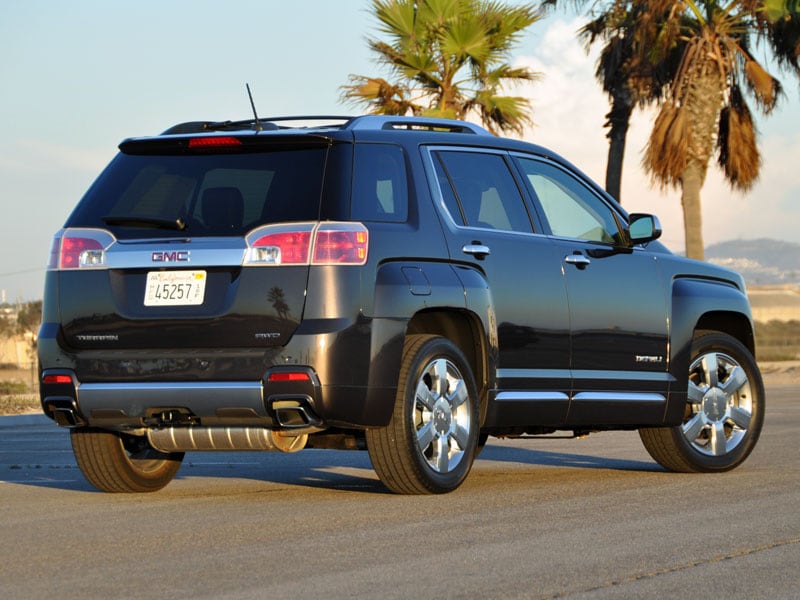
Photo by Christian Wardlaw